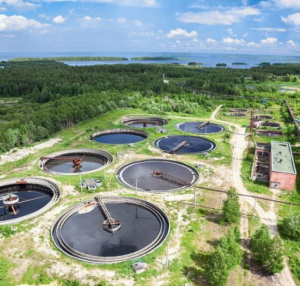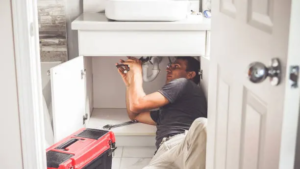Liquid Waste Disposal Perth is a byproduct of almost every manufacturing process. It includes wash water, solvents, and contaminated liquid substances.
This waste can be disposed of using several techniques, including incineration. This method uses high temperatures to destroy harmful pathogens and reduce the volume of garbage. Other methods include land application and deep-well injection.

Whether your business produces liquid waste, you should know proper disposal methods. This way, you can help protect the environment and public health. The first step is to separate nonhazardous and hazardous waste. Then, you need to choose a treatment and disposal method that abides by the local liquid waste regulations and guidelines.
One popular technique is dewatering, which removes water from the waste. This helps to compact the material and reduce the risk of contamination. It also allows the waste to be disposed of more easily and safely. Another popular technique is composting, which turns the waste into a valuable fertilizer for plants and soil. This method is suitable for a wide range of liquid waste types, from organic solvents to toxic metals.
Other techniques for disposing of liquid waste include disinfection and land application. Disinfection involves eliminating or reducing pathogens in the waste to prevent diseases in humans and animals. Land application is the process of spreading the waste onto a field or other surface. This can be used as a nutrient source for crops or to amend the soil’s pH level. This method is also environmentally friendly and can help to conserve natural resources.
If you produce a lot of liquid waste, make sure to use appropriate containers for storage and transport. Clearly label each container, and store them in areas that are well-ventilated and protected from sunlight. This will minimize spills and accidents during transportation. In addition, you should avoid mixing hazardous and nonhazardous wastes.
Liquid waste that is not disposed of properly can contaminate groundwater and surface water sources, which can be harmful to humans and wildlife. The waste can cause disease, disrupt ecosystems, and harm aquatic organisms. It can also change the chemical composition of drinking water, which could threaten human and animal health. Additionally, contaminated water can seep into soil, which can disrupt plant growth and destroy natural habitats. It can even be absorbed into the food chain, leading to long-term health problems. Businesses can minimize the risk of a negative environmental impact by following best practices and keeping up with the latest regulations.
Techniques
Several techniques are available to dispose of liquid waste safely and in an environment-friendly manner. These include dewatering, root-zone treatment and composting. These methods can be used on nonhazardous wastes and work well for large volumes of liquid waste. They are also effective for preserving natural resources, such as water and nutrients. This helps businesses maintain good relations with residential neighbors and avoid costly fines for environmental violations.
Liquid waste disposal techniques should be selected according to the type of liquid waste produced by the business and local regulations. For example, businesses generating sewage effluent should use a dewatering method to separate solid and liquid waste. The resulting sludge can be treated or transported to an approved dump site for disposal.
Another method to treat liquid waste is sedimentation. This process is similar to what happens in a cesspit or septic tank, except that it uses gravity instead of centrifugal force to separate liquid waste from solid waste. The liquid waste is left in a sedimentation basin and the solids gradually fall to the bottom. The solids are then disposed of or treated based on the availability of processing methods at the facility where sedimentation takes place.
There are many other techniques that can be used for treating and disposing of liquid waste, including incineration and deep-well injection. However, these methods may not be practical for businesses with limited space or resources. Some businesses choose to store their liquid waste in barrels or tanks until it can be picked up by a professional rubbish management company.
Other disposal methods include anaerobic digestion and anaerobic lagoons. These processes decompose organic waste without oxygen and produce biogas, which can be used for energy. These processes can be applied to sewage, animal waste, industrial waste, and even municipal waste. Liquid waste disposal can also be accomplished by using biological nutrient removal, which reduces the amount of nitrogen and phosphorus compounds in wastewater. This reduces water pollution and harm to aquatic ecosystems.
Regulations
There are many laws and regulations that govern the handling, transportation, treatment, recycling, and disposal of liquid waste. These laws ensure safety and environmental protection, as well as protect workers from hazards in the workplace. While it is important to keep in mind that these laws may differ from jurisdiction to jurisdiction, there are some basic requirements that should be followed by all facilities.
In addition to federal and state environmental regulations, many local communities also have their own regulations regarding the disposal of liquid waste. These regulations often require the use of specialized waste management equipment, which can help reduce the risk of contamination. In some cases, this equipment may also be required to be inspected on a regular basis.
Liquid waste can be disposed of in many ways, including through sanitary sewer drain disposal, chemical waste program, or by land disposal. The first step in determining which method is best for your company is to identify the type of liquid waste that you have. For example, if you are disposing of flammable liquid waste, you must follow specific guidelines to prevent environmental contamination.
Ideally, your company should separate nonhazardous and hazardous liquid waste. Once this is done, you can select treatment and disposal methods that abide by local regulations. You can also send your liquid waste to an EPA-registered facility that has the proper equipment and is licensed to handle it.
It is important to know that it is illegal to pour hazardous or nonhazardous special wastes into the sanitary sewer, storm sewer, creek, ditch, gully, surface impoundment, or septic system. If these chemicals are poured into the sewer system, they can cause explosions and blockages in pipes. Discharges into underground water systems can poison private or public water supplies and kill livestock and wildlife.
In order to dispose of liquid waste safely, you should store it in a satellite accumulation area near where it was generated. Moreover, you should never move or relocate chemical waste more than 55 gallons away from where it was generated. You should also avoid rinsing or dripping chemical wastes into the sanitary sewer or drain. Only certain liquids can be drained down the drain, such as backwash from filter systems or dewatering liquids.
Costs
The cost of liquid waste disposal varies depending on the type and quantity of the waste. Some techniques are less expensive than others, but all methods require significant investments in infrastructure and personnel. This is why it is important to understand the costs associated with each technique before deciding on a solution. The cost of transporting the waste from a facility to the landfill is also a factor.
Many communities offer hazardous waste disposal programs where businesses can dispose of their toxic waste at no cost. These programs are an excellent way to reduce your waste disposal costs and still meet regulatory requirements.
A major concern with liquid waste disposal is the toxicity of the material and its potential to contaminate water sources and plant life. It is also a source of air pollution, which can aggravate asthma and other respiratory conditions. In addition, it can lead to a buildup of toxins in the soil and the surrounding environment. It is therefore important to dispose of liquid waste properly.
Managing liquid waste involves careful containment and treatment of the material, as well as the proper transportation to a landfill or recycling plant. Companies should ensure that they have a comprehensive system in place to avoid environmental damage and safeguard their employees from accidents. They should also be able to track the progress of their waste management program and maintain compliance with regulations.
One way to reduce the cost of liquid waste disposal is to recycle it. This method is becoming increasingly popular in the US as it protects the environment and provides a valuable resource. It can be used for organic fertilizer and can benefit agriculture in various ways. This process requires a certain level of knowledge and expertise, so it is best to use a company that specializes in waste management.
Collecting and disposing of New York City residential and public trash cost $1.5 billion in fiscal year 2013. This amount is more than the entire budget for many large cities around the world. However, unlike many other cities, New York does not charge fees for refuse collection and disposal. While a fee might not be feasible for all households, a small fee would not put an undue burden on residents. It might even encourage residents to use less waste and reduce their energy consumption.
